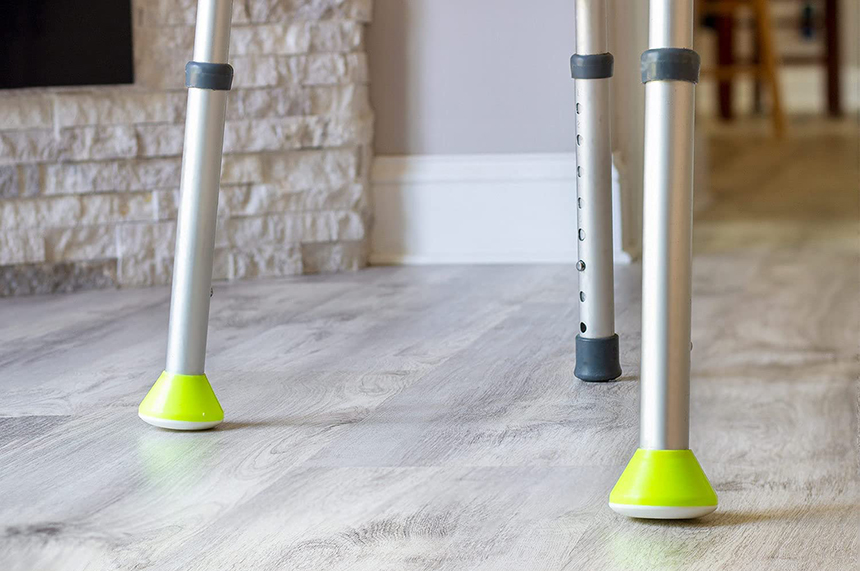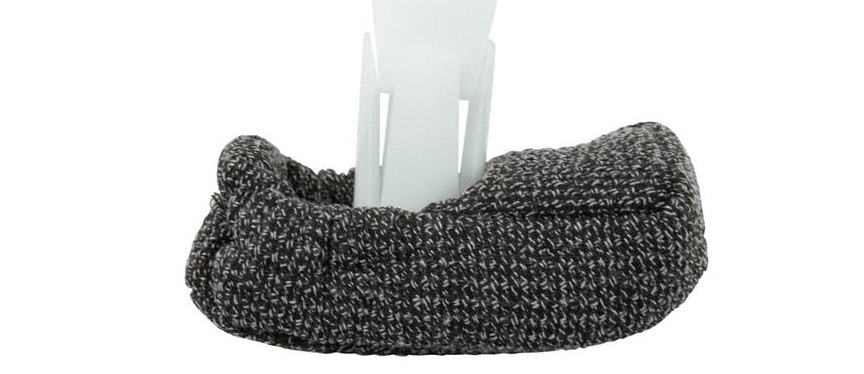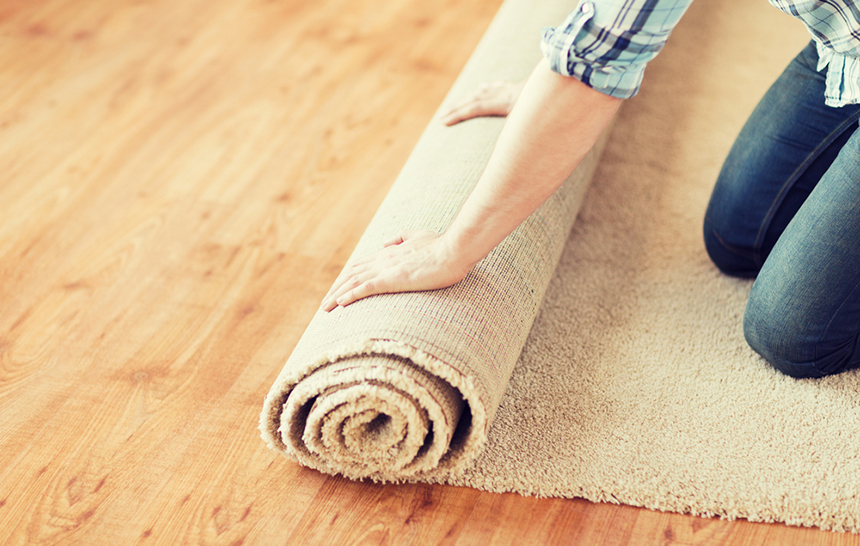If you’ve received a new walker to assist your mobility, you know how challenging it can be to get used to it. You have to learn how to walk without it slipping away from you. What to do if you feel you’re going too fast? And how to go round corners without bumping anything? With all the challenges of learning to walk in a new way, you also have to deal with marks from the walker on your wooden floors. So, in this article, we’re going to help you with at least one challenge and discuss how to protect hardwood floors from walkers.
You have probably spent a lot of time finding the options for your walker. Then there are several methods you can consider for making your walker floor—friendly. The first is to put soft cushioning onto the legs and wheels of the walker. The second is changing what’s on your floor. For each of these categories, there are different Trusted Source Slide show: Tips for choosing and using walkers - Mayo Clinic If you break a bone in your leg or foot or you’re at risk of falling, a walker can make it easier for you to get around. Talk to your doctor or physical therapist about the options. www.mayoclinic.org approaches to alleviate the problem, and we’ll go through a list of viable options that don’t break the bank.
The first option is tennis balls. You can either buy them yourself and cut four slits in them, or you can purchase them from any reputable medical equipment supply store with ready-cut slits. Those four crosswise slits enable the tennis ball to fit around the leg of the walker, and it protects the floor from drag marks and scratches.
The benefits of using tennis balls are that they not only protect the floor but enable you to make less noise when maneuvering around the home. Furthermore, walkers can be hard to lift, and tennis balls allow the walker to glide a little. Interestingly, they also help prevent too much slide, which makes it a more popular choice for walkers with legs. Note that this option doesn’t work well on rough cement or carpet because it causes the walker to ‘stick’ a little and can possibly cause a fall.

The reality is that the footpads can pick up dirt and bacteria, as well as pet hairs, so they have to be changed regularly.
The next option is footpads. You can once again either purchase them ready-made or make them yourself. They consist of material tips that you fit onto your walker to prevent slippage. They work well and prevent moisture from getting onto the walker and rusting it. These pads are glued on. If you make your own, you’ll need to measure the bottom of your walker, cut out circles that will fit the bottom of your walker, and attach with strong glue.
Walker glides are like tiny skis you put on the feet of the walker. It enables the walker to glide across the floor. This is helpful if you have brakes on your walker to prevent too much glide. They’re made of plastic and help you if you don’t have the strength to lift the walker off the floor. The issue here, as with any walking frame aids, is that you have to have different indoor and outdoor frame covers because they are designed to do different things. It might be an idea to have two walkers— one for outdoor and one for indoor use Trusted Source Slide show: Tips for choosing and using walkers - Mayo Clinic Three-wheel walker. This walker provides balance support like a four-wheel walker, but it is lighter weight and more maneuverable. www.mayoclinic.org —so you don’t have to frequently change the foot covers.
If you find that your floor is particularly sensitive and needs extra cover even after walker glides, you can get walker glide covers. They fit over the glides like slippers and help you move along even more smoothly without damaging the floors.

The only difficulty is that they sometimes come off and can be a little fiddly to put on.
Walker socks are small tubes, closed on one end, and open on the other. They fit snugly onto the walker’s legs. They can be knitted or crocheted, but you get ready-made ones too. All you have to do is slip them on, and they’re fit for use.
You may also use strips of felt cut to the shape of the bottom of the walker’s legs to provide that cushioning effect. You can purchase them cut to shape already or make your own and glue them on. They offer that cushioning layer to help protect the floor.
Feet caps are made of plastic and fit onto the bottom of the walker’s legs, just as all the other contraptions mentioned above do. They are soft and so prevent scuffing and scratching of your floor’s wooden surface. They don’t pick up dust and dirt and are therefore useful for allergy-sufferers. They are also easy to clean and can be given a quick wipe at the end of the day with mild soap and water. You can dry them, and they’re ready for use again. You needn’t take them off to clean them unless something is trapped in the crease between the walker and upper cap. This makes it all the easier for the disabled person.
The reality is that using the above-mentioned steps may well help to protect your floor’s beautiful wooden surface. However, it’s well known that even the wheels of the walker can scuff the floor, so you can consider other options to protect the surface underfoot.

Area rugs are very useful to assist you in protecting your floor against scuff and scratch marks.
The rugs can’t be too thick, or you would lose the ability to glide across them. Nor can they be fluffy, or the walker will get stuck in the fibers and cause a fall. So, you need to consider using hard-wearing rugs with glides. They’re tough underfoot but won’t cause tripping because the glides will go smoothly over the rug. The best option for covers on the walker’s legs when using rugs is glides. They won’t get stuck in any rug like most other options, and you’ll be protected from dangerous tumbles.
You’ll also need to make sure the rug is a no-slip type or put rubberized netting underneath to prevent slippage and falls Trusted Source Fall-Proofing Your Home | National Institute on Aging Have handrails on both sides of the stairs, and make sure they are tightly fastened. Hold the handrails when you use the stairs, going up or down. If you must carry something while you’re on the stairs, hold it in one hand and use the handrail with the other. Don’t let what you’re carrying block your view of the steps. www.nia.nih.gov . The big question is what to do for the floor space in between the various rugs that you put down. The floors can still get a little scuffed in those bare-wood areas. The reality is that you can put down long runners, but there are no solutions that are 100% perfect. You can only aim for a significant reduction of scuffing.
There are many challenges Trusted Source Physiotherapy: How to use a walker Don’t put the walker too far ahead of you when walking. A good rule is to have the walker no more than 1 step length in front of you. myhealth.alberta.ca to get used to your new walker. Learning how to balance and how to move the walker forward without toppling are some of the problems you’re overcoming. Using the brakes meaningfully is also important. The last thing you want on your agenda is more cleaning. That’s why it’s important to try and prevent scuff and scratch marks on your wooden floors before they occur. You may use the techniques we’ve discussed on how to protect hardwood floors from walkers. You may also use a four-wheeled walker, which, if you’re able to use the brakes correctly, will reduce scuff and scratch marks quite considerably, although not completely. No matter what you decide to do, try and get something you can rent before buying so that you can get what is best suited for you and your home. Getting used to your walker is challenging, but it’s worth overcoming the difficulties for the benefits.